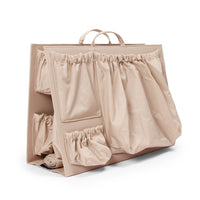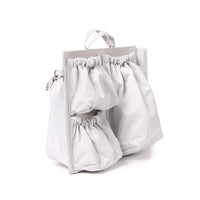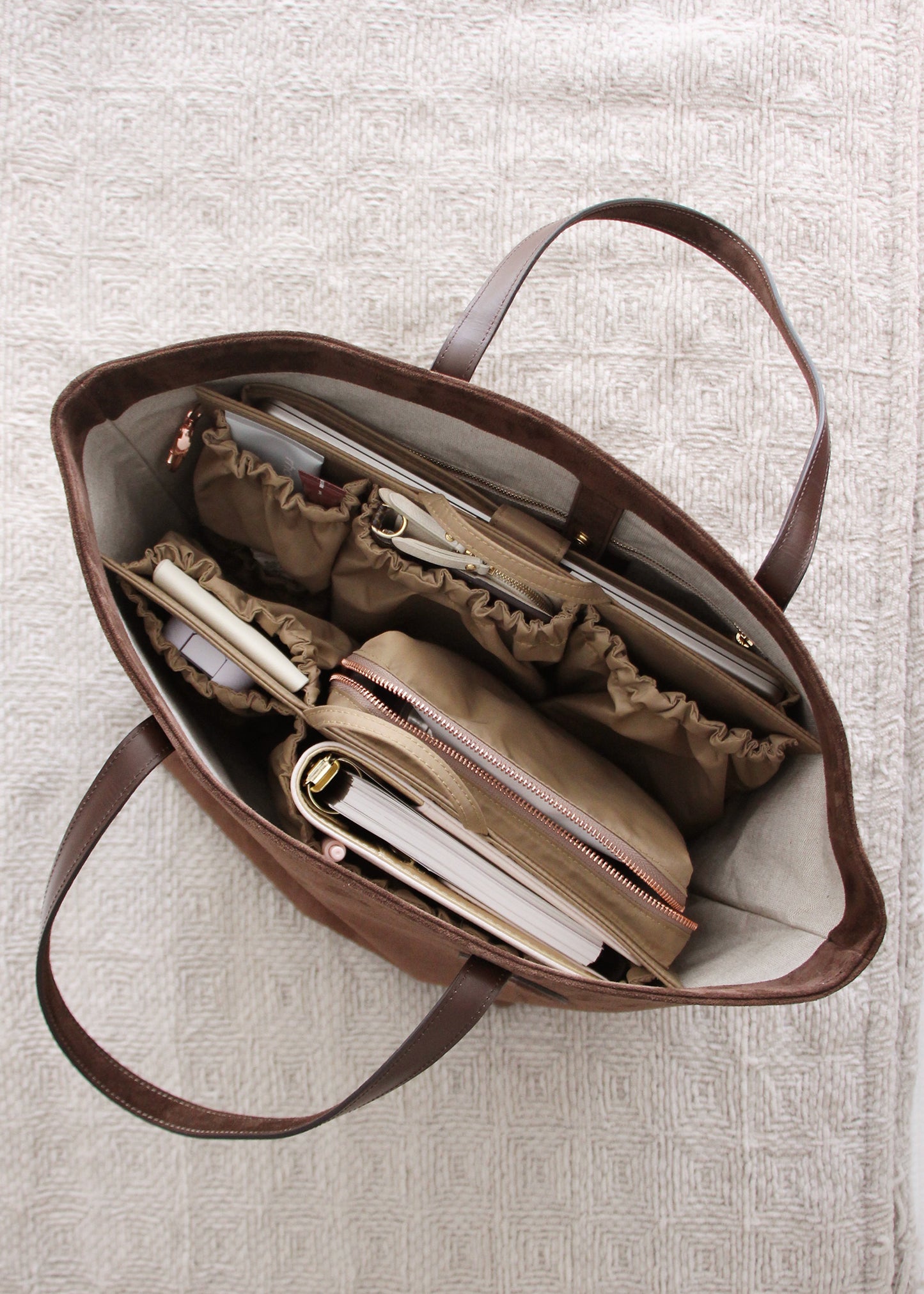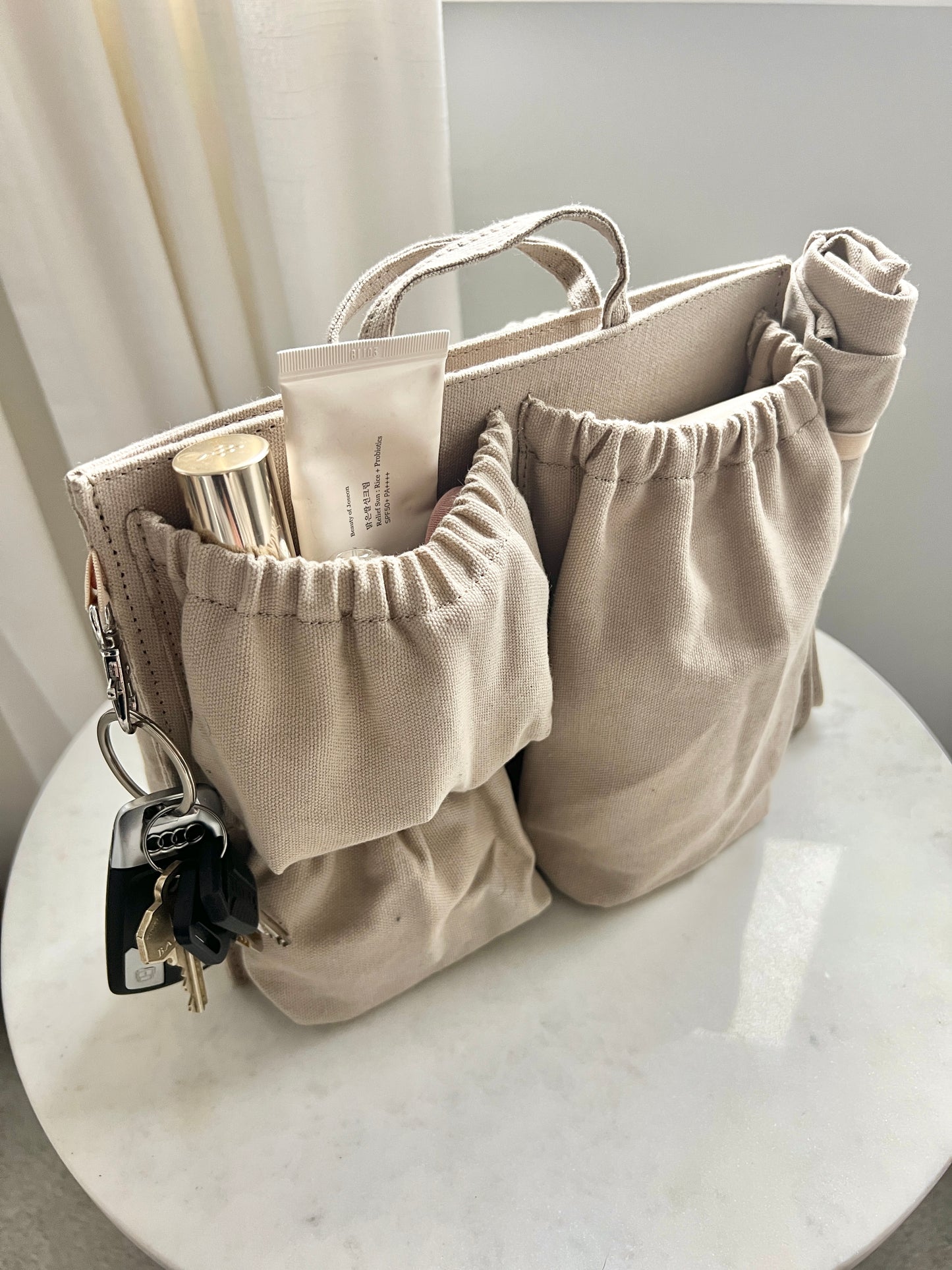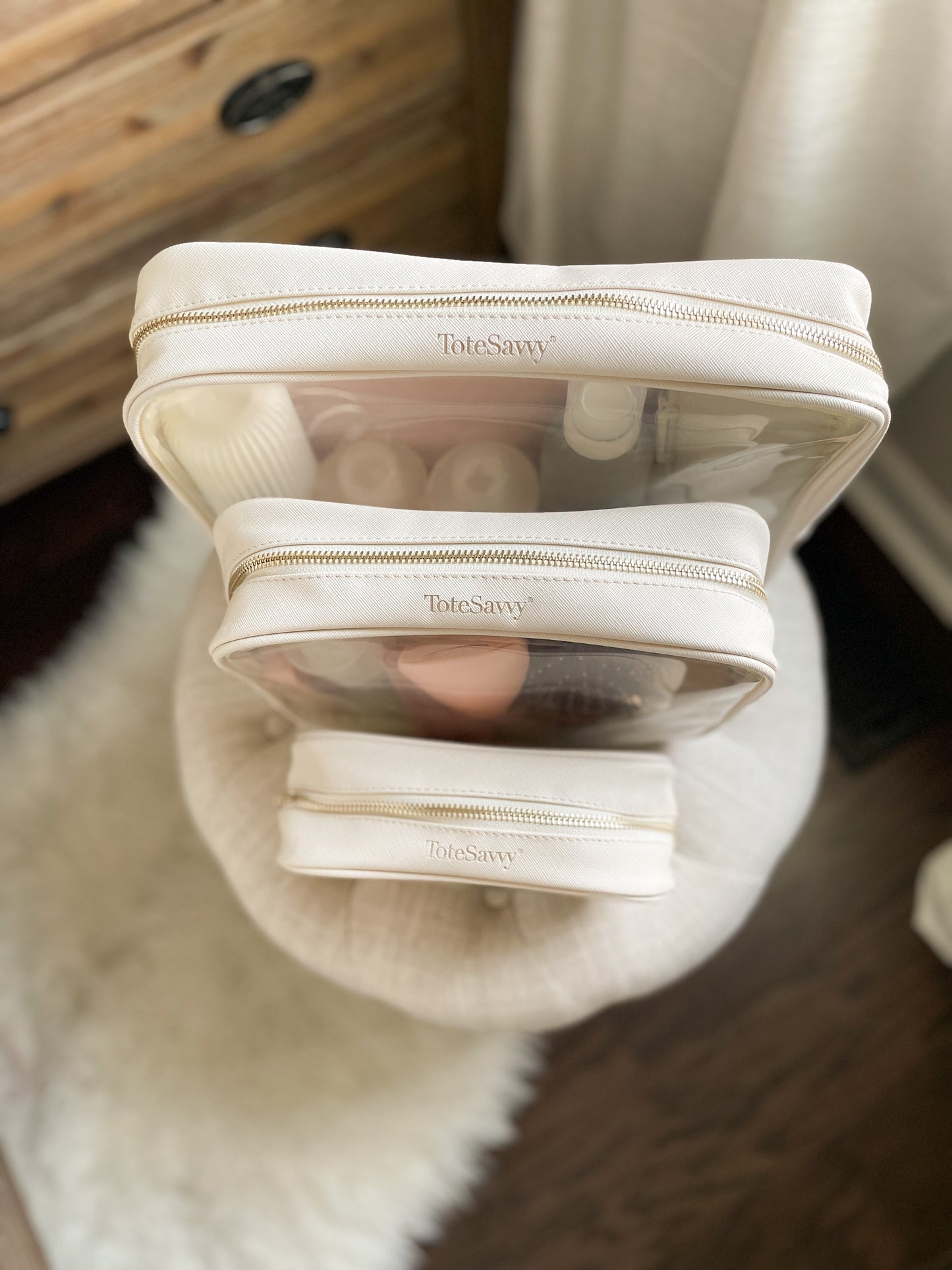Applies to all ToteSavvy brand items including organizers, pouches, and branded accessories.

by: Mahri Relin of Body Conceptions
I love the process of working with women during their pregnancies and seeing the ways that exercise can be so helpful and energizing. After giving birth, I know the tendency is to want to jump right back into exercise. However, it’s easy to feel lost about how to proceed once you get “cleared” by your doctor since so few people receive guidance. Where do you start, and are there things you need to know to make sure you’re exercising safely?
After having a baby, most of the focus for a new mom should be on healing. There are lots of changes the body experiences during and after pregnancy, and proper focus on posture, breathing, and regaining strength (especially in the core) is so important. I often tell new moms that this healing process is key to making sure that they can return to more intense fitness safely. When parts of the body aren’t strong enough, other parts of the body take over and can become tight and painful or even become injured (like your upper or lower back and your hip flexors, for example). Getting back into exercise with patience is the best way to prevent injury and ultimately return to your previous fitness life with more strength and control than ever before.
Here are a few quick tips to keep in mind as you start:
Make sure your rib cage is aligned over your hips
Lots of new moms shift back in their rib cage and upper body (especially when they’re holding their new baby), which makes it harder if not impossible to connect with your core. It can be helpful to look in the mirror, stack your rib cage over your hips, and remember this feeling as you go about your day.
Focus on breathing properly
Many pregnant and postnatal women breathe up into their shoulders, which can lead to tightness and pain in the neck, shoulders, and upper back. Breathing like this can also make you feel stressed. Try keeping your shoulders relaxed and down while you breathe deeply into all side of your lower body and relax your pelvic floor at the same time. On the exhale, pull your lower abs into your spine. Notice how this connects you with your deep core and pelvic floor and also helps you relax and reduce anxiety.
Try not to tuck your pelvis and clench your glutes
The body does an amazing job of making things happen one way or another. For example, when the core is weak after birth, many women unconsciously tuck their pelvis and clench their glutes as a way of stabilizing themselves. Unfortunately, this can lead to injury and pain, and it also leads to a disordered connection to the core. Squats can be a great way to counteract this pattern and also strengthen and stretch the glutes. Rock-backs on hands and knees can also help. And while you are working on all of this, you should focus on strengthening the lower, deep core muscles so that you can engage them more automatically.
Stretch and open the front of your shoulders and watch upper back hunching
Actions like picking up and holding your baby and breastfeeding are unavoidable, and they can also lead to hunching in your upper body and tightness in your shoulders. Try to engage your core before you lift and consider using bolsters to support breastfeeding. Also, take a few minutes to open up and stretch your shoulders, which will make a huge difference. Lie down along the length of a roller or a rolled-up blanket and place your arms out to your sides in a goal post position. Try to let the elbows reach down to the ground and hold this position. Also try making angel shapes as you extend your arms above our heads, out to the sides, and down to the ground with your fingers tracing along the ground.

Some exercise ideas:
Use the tips above to stretch and strengthen properly as you ease into an exercise regimen. It may take some time before you get back into explosive plyometric exercise or extensive cardio. Try starting with shorter intervals of exercise, and make sure you are aligned and in control of your movement. You will build stamina over time, and you will notice that you can do more and more without losing form and technique. Here are a few exercises that can be great to add into your routine…
Abs on the Back with a Pillow
Core work is essential at all stages of postnatal recovery and beyond.
- Start by lying on your back with your legs bent and feet on the ground. Place a small pillow between your knees.
- As you inhale, relax your pelvic floor (imagine it lowering down a little), and breathe into your lower belly, sides, and lower back.
- On your exhale, squeeze the pillow, flatten your spine against the ground, and pull your low abdominals into your spine.
- Inhale and repeat. You can do this multiple times in a sitting position and several times throughout the day.
Parallel Squats and Lunges
As discussed above, squats can help counteract postural issues that arise postnatally. They are a fantastic way to strengthen your core and lower body, and they also help prepare you for lifting heavy things (like babies!) while supporting yourself properly.
- Start by standing with your feet hip distance apart and your knees and toes facing forward. You can hold your arms in a prayer position.
- Lower into a squat, driving your hips and tailbone back with a flat spine and lower abs engaged. Keep your chest reaching forward and your shoulders relaxed back and down.
- Stand up and come down again into your squat several times (6-8X), then hold the squat and pulse in this position (10-12X).
- Repeat two times through.
You can add variations to this exercise by stepping out to deep lunges on each side with the same pattern (coming all the way up and down from standing to the lunge 6-8X and then holding the lunge with multiple pulses). You can also step into alternating back lunges on each leg.
Bonus: Incorporate your baby!
Exercise on a blanket
Try using blanket time as an exercise experience! You can do little pushups, leg lifts, bridges, rock-backs, and stretches, all while touching and interacting with your baby. My favorite is pushups on your knees, kissing your baby every time you go down toward the ground.
With all of these exercises, make sure you have been cleared by your doctor first. You should be careful if you have a diastasis or any pelvic floor pain or incontinence. Working with an expert, even briefly, can be very helpful in helping you navigate what works for your body and what doesn’t.
And don’t focus on anyone else!! This is your own unique recovery experience. Figure out what feels good and what doesn’t and notice all the amazing gains you make every day. Going at your own pace and working carefully will prevent injury and will help you build greater strength and alignment - perhaps more than you may have had before your pregnancy!
Mahri Relin is the founder of Body Conceptions, personalized workouts designed to support women through all stages of life. As an AFPA Pre- and Postnatal Exercise Specialist, a Certified Wellness and Nutrition Consultant, and a Certified Personal Trainer, Mahri works with women to help them exercise safely during and after pregnancy. Please follow along at @bodyconceptions
